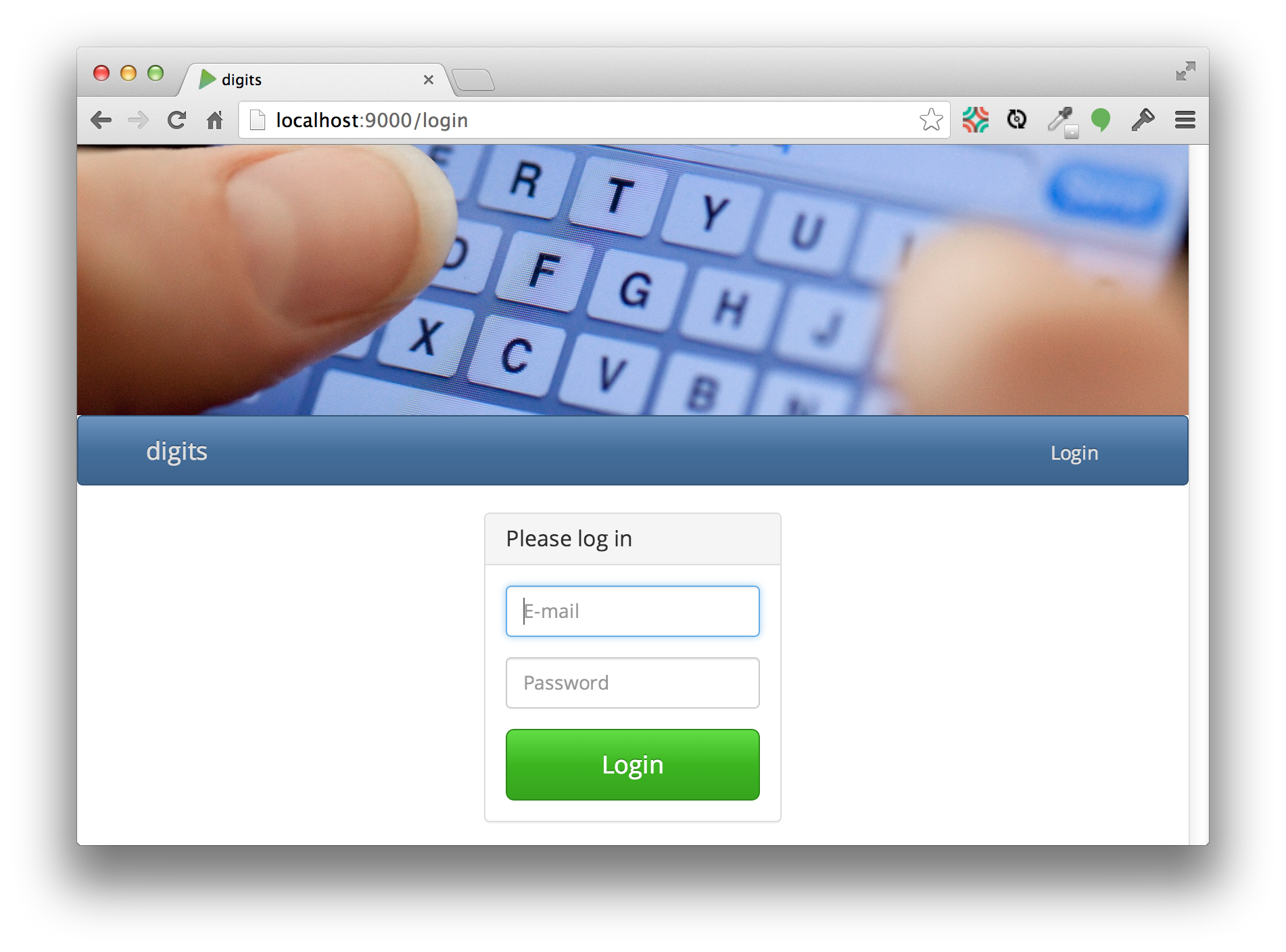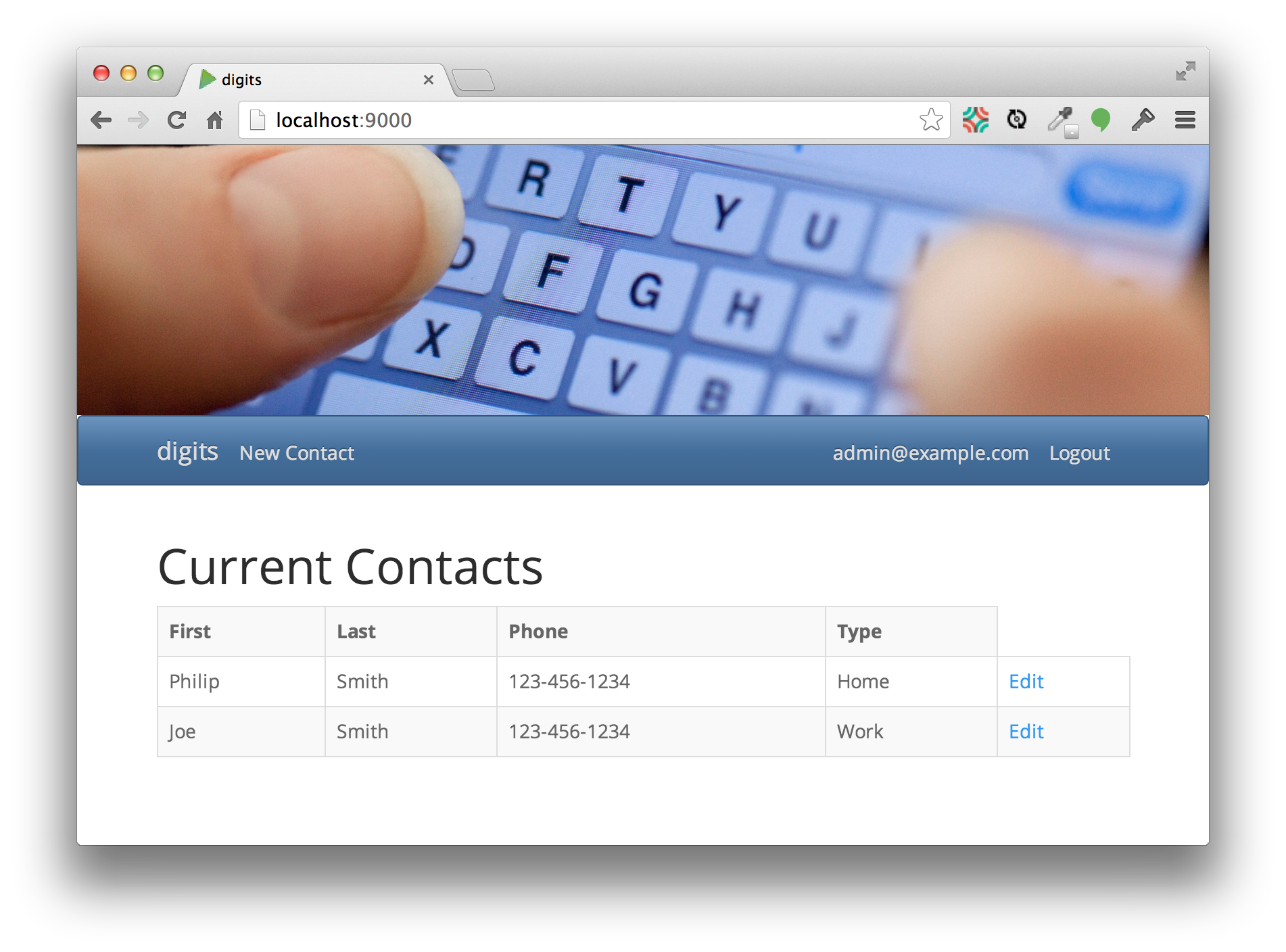Practice WOD: DigitsLogin
The goal of this WOD is to add a login page to your Digits system so that only an authenticated user can access the list of contacts and the add/edit form. The behavior should be as follows:
(1) If the user is not authenticated, the home page does not display any list of contacts, and the navbar provides a link to a login page.
Clicking on the login link takes the unauthenticated user to the login page:
Once the user is authenticated, they should return to the home page which now lists contacts, and the nav bar should contain the email of the user and links add contacts and to logout:
You should download the play-example-login system, import it into Eclipse and get it running locally before starting this WOD as it provides a significant amount of code for producing this behavior.
Instructions
Support Create, Read, and Update for your digits application. You have already implemented Create and Read, so this WOD simply requires you to modify the existing code to support Update. Follow the approach described in the screencast of using an ID field to distinguish between new and pre-existing instances.
- Start your timer.
- Create a branch of your digits system called login-1.
- Enable checkstyle.
- Add a small change to a file, then push this commit to GitHub with the message “Starting WOD”.
- In this branch, implement authorization and authentication as illustrated above.
- Begin by implementing the UserInfo and UserInfoDB classes and updating the Global class to create credentials for a user on startup.
- Next, implement the Login view, updating the routes and controller class as necessary. The Main template will also need adjustment to support authentication data.
- Next, create the Secured class and attach authentication annotations to controller methods to implement the behavior specified above.
- Ensure that the navbar displays items appropriately depending upon authentication.
- Make any other UI adjustments as necessary.
- When you have verified that it’s working, push your enhanced code to your branch on GitHub with the message “Finished WOD”. The difference between the timestamps associated with the two commits represent your WOD time, and the code diffs represent your implementation.
When finished, stop your timer, and record how many minutes it took you to complete the WOD.
Rx: <23 min Av: 23-35 min Sd: 35-45 min DNF: 45+ min
Demonstration
Once you’ve finished doing the WOD a single time, watch me do it:
Standard WOD Caveats
You’ll learn significantly less from watching me solve the WOD if you haven’t attempted the WOD yourself first.
While it’s an achievement to finish the WOD no matter how long it takes, you might experience “diminishing returns” if you work longer than the DNF time. Thus, it might be strategic to stop working at the DNF time and watch my solution.
After watching my solution, I recommend that you repeat the WOD if you have not achieved at least Av performance. If so, be sure to:
- Delete your old project so you cannot refer to it;
- Don’t look at my screencast while you WOD; and
- Reset your timer.
Feel free to keep trying until you make Rx if that’s of interest to you.
How to repeat the WOD
To repeat the WOD, simply switch your local workspace branch to master, then create a new branch off of master called “Attempt-2″ (or whatever attempt you are on). Then, in the play console, type ; clean ; compile ; run to clean the target directory, then recompile the system, then run the web application.
When you’ve finished doing this WOD as many times as you need, you might want to merge your changes into the master branch so that they are easily available for future WODs.


